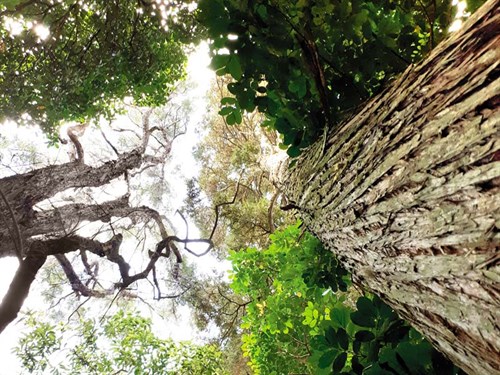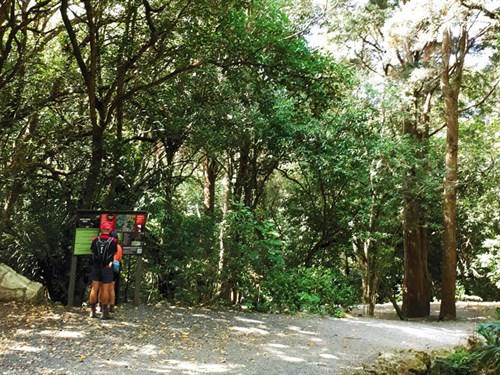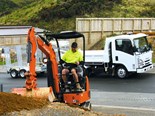Kauri dieback
In his latest column, Patrick Cox talks about the incurable and fatal Kauri dieback disease affecting many New Zealand kauri forests
The hysteria around kauri dieback by the so-called experts is getting out of hand. Why are people getting the blame for it spreading? It has been with us since its discovery on the Great Barrier Island in the 1970s, and it is nothing new when you think it has been with us for nearly 50 years.

Some of you might remember the hysteria created by the experts 25 to 30 years ago that the native cabbage tree had a rare disease and was dying out. Today, the cabbage tree is as healthy as it’s ever been and survived to the point that around Mount Auckland on the Kaipara, there is a small valley full of cabbage trees that are as pretty as a picture.
What is causing kauri dieback?
We cannot ignore the fact the kauri dieback (Phytophthora agathidicida) is fatal and kills our kauri with root rot associated in a collar around the base of the tree with cankers seeping gum. Following this, the tree defoliates and finally dies. Boot baths before and after leaving a forest are a complete waste of time.
You leave your home, hop in your car, park in the car park, wash your boots, and walk into the forest. When leaving, you wash your boots again and go home. Think about this carefully—what has washing your boots achieved? You have wandered around the forest with your boots picking up soil particles and moved them around.
So have the birds that feed on the ground, scratching away in the dirt looking for bugs before flying away to another spot. In all fairness, in the Waitakere Ranges, the disease has escalated either side of the walking tracks by those who walk off the relieve themselves and is obviously having an impact spreading and concentrating the disease.
There are so many carriers living in our forest that don’t wash their feet that it makes the boot bath a joke: wild pigs rooting around on the forest floor, possums, wild cats, and goats to name a few, reside on the floor of our forests. Kauri dieback is also happening in parts of the forest that are not visited by people. Birds have no boundaries.
The fact is the microorganism seems to have existed in New Zealand for centuries; it is thought to even predate human arrival. Because the disease is soil born, it is more likely to spread through waterlogged ground as the spores can migrate on their own.

We know that kauri have been around for 35,000 to 40,000 years with swamp kauri being dug up all over Northland. I have seen some of these trees extracted with leaves still intact, so what killed them?
My thought on this is that it was more likely a tsunami, as nearly all the trees were lying the same way. In other areas, trees were lying in the opposite direction. This proves that the mighty kauri has been around for a long time and must have survived some incredible times. Nature might have its own way of fighting this disease and certain trees will be building up a resistance to this and will pass it on to its offspring.
I have my own thoughts on how to deal with this problem and it will cause mass hysteria. If a person catches a contagious disease, the system immediately isolates that person to a special ward in the hospital until they are safe to be released back into society. If you have a sick tree, why not cut it down and remove it? Put a logging crew into our forest removing all the affected trees.
Heli-lift the logs to a suitable site for milling, sell the timber, and put the money into research for the protection of creating a healthy forest. It makes sense. Sustainable logging has been around for a long time and has been practised in many countries. Tasmania is big on sustainable logging in their native forest.
If the harvest plan initially is to take out all the malformed and diseased trees, surely this would make sense. The trouble is when we are faced with problems such as kauri dieback, we go back to the lab and look for an answer inside a test tube, and in this internet era, nobody wants to make waves. If you want a healthy forest, remove all the dead and dying.
It is amazing how quickly a forest floor recovers once light has been let in by the removal of trees. Dormant seeds lying on the ground get an opportunity to grow towards the sunlight.

To me, the answer is simple: cut them out. But can only imagine the reaction from Forest and Bird, The Greens, and all other tree huggers. My solution just would not fly. I’m picking the mighty kauri will be around for another 30,000 to 40,000 years and will face many challenges to live. The kauri tree is found only in Northland and the Coromandel and original covered 1.2 million hectares of land with a lifespan of up to 2000 years.
I think they know how to survive. As a nation, we can help by acting sensibly. For those heading off for their first forest walk, do a little research about where you are going and what impact you might have on the environment you are in.
The current rahui over the Waitakere Ranges is not working, as a lot of us are not facing facts. My thoughts are that in the long term, the kauri will survive and it will outlive us all. Its history proves that it survived for more than 40,000 years without human intervention, and I’m sure this will be the case in the future.
Humans live for an average of about 80 years, and the mighty kauri for up to 2000 years. I think they might know a little bit more about living than what we do.
Keep up to date in the industry by signing up to Deals on Wheels' free newsletter or liking us on Facebook.

















